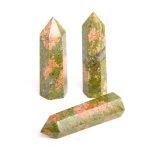Introduction

Red minerals, adorned with their captivating hues, are not merely aesthetically pleasing but also harbor significant geological and scientific importance. Their presence in nature has shaped the Earth’s history, influenced its ecosystems, and continues to inspire technological advancements. This comprehensive article delves into the fascinating world of red minerals, exploring their geological origins, diverse properties, and promising applications in various industries.
Geological Occurrence of Red Minerals
Red minerals owe their distinctive color primarily to the presence of iron oxides, such as hematite (Fe2O3) and magnetite (Fe3O4). Iron, one of the most abundant elements on Earth, readily forms these oxides when exposed to oxygen. Hematite’s characteristic red color arises from its hexagonal crystal structure, while magnetite takes on a dark, almost black appearance due to its cubic structure.
Red minerals are predominantly found in sedimentary rocks such as sandstone and shale. These rocks form when layers of sediment, primarily composed of sand, clay, and iron-rich particles, are compacted and cemented over time under pressure. Iron oxides can also be found in igneous rocks, particularly in volcanic environments, where they crystallize from cooling magma.
Properties of Red Minerals
1. Magnetic Properties: Magnetite, as its name suggests, is strongly magnetic. This property has led to its widespread use in industries such as mining, navigation, and electronics.
2. Hardness and Durability: Hematite and magnetite are among the hardest minerals on the Mohs scale, with hardness values of 5.5-6.5. This durability makes them suitable for use in abrasives, polishes, and construction materials.
3. Chemical Stability: Red minerals exhibit high chemical stability, making them resistant to weathering and corrosion. This property enables their long-term preservation in geological formations and their potential application in harsh environments.
4. Optical Properties: Hematite and magnetite have unique optical properties. Hematite’s reddish color and high reflectivity make it a suitable pigment in paints, cosmetics, and ceramics. Magnetite’s ability to absorb electromagnetic radiation has led to its use in stealth technology.
Applications of Red Minerals
The diverse properties of red minerals have spawned a wide range of applications across various industries:
1. Industrial:
- Iron Ore: Hematite and magnetite are the primary sources of iron ore, essential for the production of steel and other ferrous metals.
- Abrasives and Polishes: Red minerals are used in grinding wheels, sandpaper, and polishing compounds due to their hardness and abrasiveness.
- Heavy Media Separation: Magnetite’s magnetic properties are utilized in heavy media separation, a process that separates minerals based on density.
2. Medical:
- Rust Preventers: Red minerals such as hematite are used as rust preventers in paints and coatings due to their corrosion resistance.
- Drug Carriers: Researchers are exploring the use of red minerals as drug carriers in targeted drug delivery systems.
3. Environmental:
- Water Treatment: Magnetite has been employed in wastewater treatment plants to remove heavy metals and other contaminants.
- Soil Amendment: Red minerals can improve soil health by increasing iron content and improving aeration.
The Role of Red Minerals in the Natural World
In addition to their industrial applications, red minerals play significant roles in various natural processes:
- Iron Cycle: Iron oxides, particularly hematite and magnetite, are key components of the iron cycle, which regulates the flow of iron through the Earth’s crust, oceans, and atmosphere.
- Oxygenation: The presence of red minerals in ancient rock formations provides evidence of the early oxygenation of the Earth’s atmosphere, a pivotal event in the evolution of life.
- Biomineralization: Many organisms, including bacteria and marine animals, utilize iron oxides in their biomineralization processes, creating structures such as magnetite crystals in magnetotactic bacteria.
Emerging Applications and New Frontiers
1. Magnetic Sensors: Researchers are developing ultra-sensitive magnetic sensors using red minerals for applications in medical imaging, security, and environmental monitoring.
2. Energy Storage: Red minerals, particularly magnetite, show promise for use in next-generation energy storage systems due to their high electrical conductivity and electrochemical stability.
3. Biomedical Engineering: The use of red minerals in biomedical engineering is expanding, including the development of magnetically guided drug delivery systems and contrast agents for medical imaging.
Common Mistakes to Avoid
-
Confusing Hematite with Other Red Minerals: Red minerals other than hematite, such as cinnabar and realgar, may have similar colors but possess different chemical compositions and properties. It is important to identify minerals correctly to ensure proper use and avoid potential hazards.
-
Overestimating Magnetite’s Magnetic Strength: While magnetite is a strongly magnetic mineral, its magnetic strength varies depending on its grain size, crystal structure, and impurities. Avoid assuming that all magnetite samples will have the same magnetic capacity.
-
Using Red Minerals in Unstable Environments: The chemical stability of red minerals can degrade in certain environments, such as highly acidic or alkaline solutions. Test the suitability of red minerals for the intended application in the target environment to prevent potential performance issues.
Step-by-Step Approach to Utilizing Red Minerals
1. Identify and Characterize: Determine the specific red mineral required for the intended application based on its properties and geological occurrence. Conduct thorough characterization to ascertain its purity, crystal structure, and grain size distribution.
2. Acquire and Prepare: Source the red mineral from reputable suppliers and ensure it meets the specifications for the intended use. Prepare the mineral by crushing, grinding, or purifying as needed to obtain the desired particle size and purity.
3. Process and Fabricate: Utilize appropriate processing techniques, such as magnetic separation, chemical treatment, or sintering, to refine and shape the red mineral into the desired form and dimensions.
4. Test and Optimize: Conduct thorough testing to verify the performance of the red mineral in the intended application. Optimize processing parameters to enhance its properties and effectiveness.
5. Implement and Monitor: Implement the red mineral in the target application and monitor its performance over time. Make adjustments to the processing or application as needed to ensure optimal results.
Conclusion
Red minerals, with their captivating hues and diverse properties, are not only a geological marvel but also a valuable resource for various industries and scientific endeavors. Their understanding and utilization have shaped human history, from ancient metallurgy to modern-day technological advancements. As research continues to unlock the potential of red minerals, innovative applications are emerging, promising to drive progress in fields ranging from energy storage to biomedical engineering. The judicious use of these minerals, coupled with careful consideration of their properties and potential hazards, will enable us to harness their benefits while safeguarding our environment and ensuring future generations can continue to appreciate their beauty and significance.




























